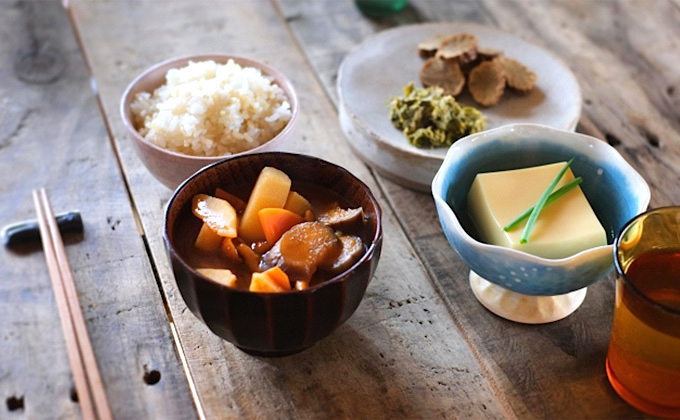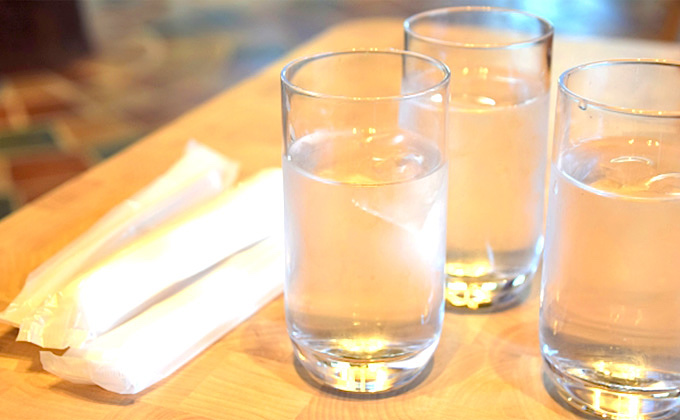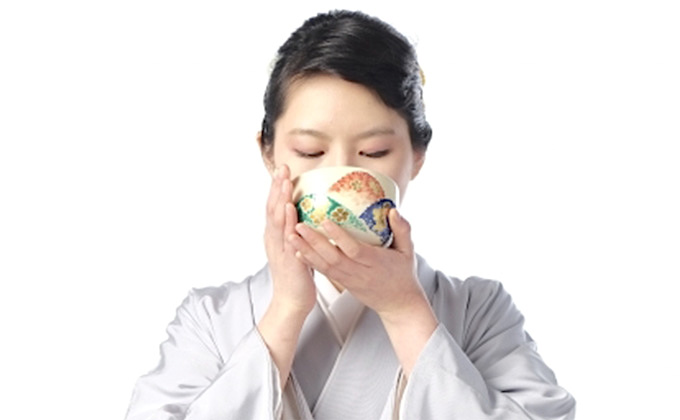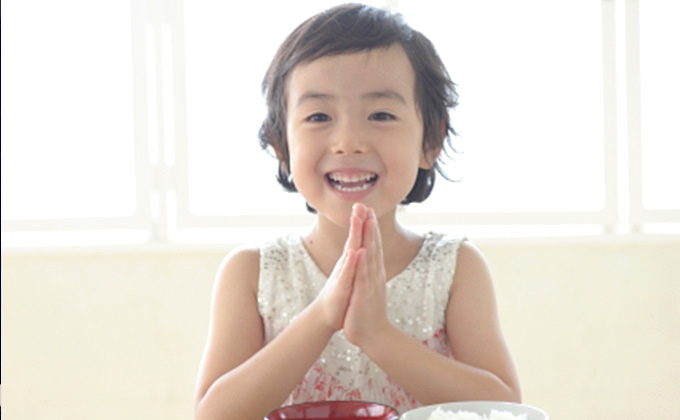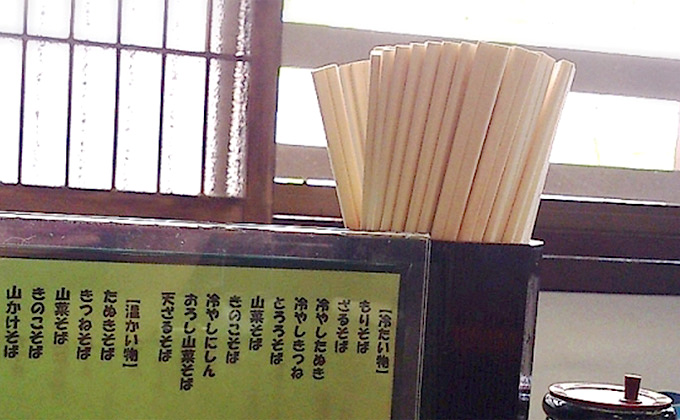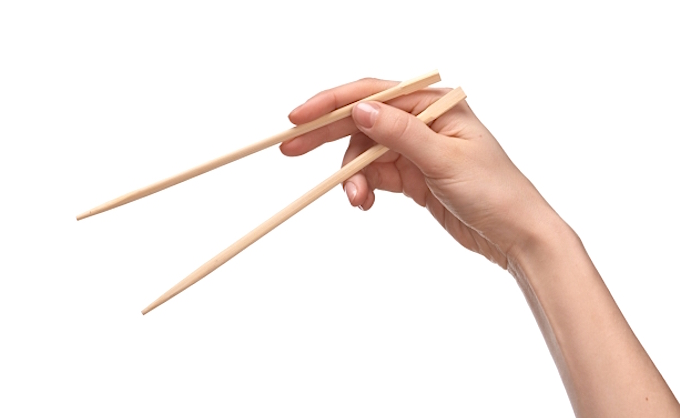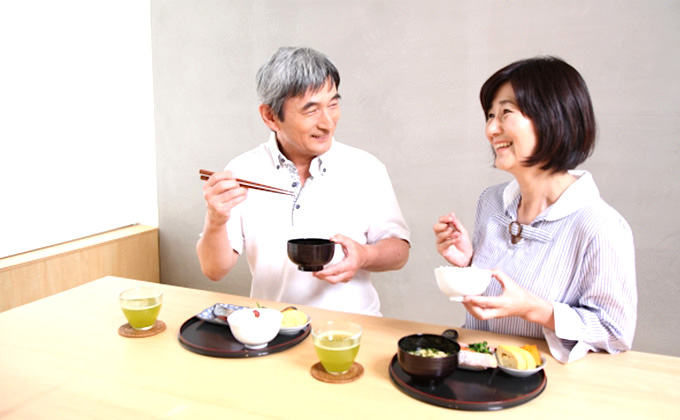TRG Info and Advice
Navigating a Japanese Meal
Whether you are eating out or have been invited into someone’s home, good table manners are essential. Demonstrating that you know something about using an oshibori (wet towel), breaking apart disposable chopsticks, holding your cup and bowls, and disposing of your garbage can not only open the door to conversation, but can also earn you respect. Of course, Japanese people are famous for their kind hospitality, and will, most likely, forgive any of your errors. But, why not get out of your comfort zone and make a cultural effort!?
Oshibori (wet hand towels)
Let’s start with a visit to a typical, family restaurant. After being greeted and asked to choose between a table with chairs, the counter, or a low table on a raised floor, your host will bring oshibori. These are sterilized, damp towels, sometimes heated or cooled depending on the season, which are usually encased in a thin, plastic covering. Remove the covering and use the towel to clean your hands thoroughly. Often, a tiny tray is delivered with the oshibori and when you have finished using it, fold the towel neatly and place it on the tray. Then, if you want to impress, fold the plastic covering into a long, thin strip, and tie it in a loose knot! Neighboring diners’ jaws may drop open if they notice this extremely polite and Japanese behavior performed by a seemingly clueless foreigner.
Holding Your Cup
After placing your order (if the establishment does not have an English menu, photographs or grotesquely real models of the menu items will help you choose), feel free to drink water or tea. Some places are self-service, so if you are not given water or tea shortly after your arrival, look around for a stand with a water cooler or tea thermos. It is good manners to hold your cup with two hands: one hand (usually the right) gripping the cup from the side, and the other (usually the left) supporting the bottom.
Before and After Eating
You may have already heard the phrase “Itadakimasu” (which roughly translates to “I humbly receive,” and which some people remember with the mnemonic tool: Eat a Mickey Mouse!). Say it before you eat, with your hands in prayer position, and your hosts will be beaming! At the end of the meal, try the phrase “Gochisousamadeshita” (which means “I appreciate all the running around and preparation involved in this meal,” and sounds phonetically something like: “Goat cheese mama day, she tough!”) and you’ll be sure to be invited back!
Waribashi (disposable chopsticks) Personality Test
Once your food has been delivered, and if chopsticks did not accompany your meal, look for a lacquered, lidded box, or a stand with disposable chopsticks. Hold the bottom, thin part of the chopsticks firmly in each hand, and pull them apart swiftly and decisively. According to rural legend, the more even the separation, the more balanced you are as a person. If the chopstick on the left side is thicker, you think of yourself over others, and if the right side is thicker, you are generous to a fault. Disposable chopsticks sometimes come in a paper sleeve, or thin plastic covering. Again, knotting your garbage and neatly placing it on the table will surely impress. It can also double as a chopstick rest throughout your meal.
Holding chopsticks properly can take years to master, but here are a few tips to make you look slightly less idiotic. Place one chopstick in the crevice between your thumb and pointer finger, then rest the other end on the inside of your ring finger, just near the bottom corner of your nail. This chopstick should stay still. Grip the second chopstick with your thumb and pointer finger, like you would hold a pen or pencil, and support it slightly from behind with your “tall man.” Try touching the top chopstick’s point against the bottom chopstick’s point: this is how you pick up food! You may find your hand cramping up, but your experience in Japan will be ten times more authentic if you can eat with chopsticks.
NOTE: Please avoid passing food from chopsticks to chopsticks, pointing with your chopsticks, or putting them in your bowl of rice sticking straight up. Most of these things are associated with funerals and, therefore, considered in poor taste at a restaurant or friendly gathering.
Holding Your Bowls
Most full Japanese meals come with a variety of bowls and dishes in different sizes, which hold servings of rice, soup, pickles, boiled vegetables, fish, meat, and noodles. It is considered polite to pick up rice bowls, soup bowls, and any other small bowls or plates, such as ones with pickles or stewed vegetables, and bring them close to your mouth. This makes navigating the food into your mouth using chopsticks much easier, but please refrain from placing them at your lips and shoveling in the food. You may sip directly from the soup bowl, however, and even make a slurping sound, especially if you are having noodles! Hold the bowl or small plate firmly in your left hand (if you are right-handed), with the bottom of the bowl resting on your fingers and your thumb on the top rim to steady it. If the bottom of the bowl is too hot, settle your fingers along the raised area underneath. Some exceptions to the bowl- lifting rule are large ramen bowls, larger plates, for example those that come with tempura, and any fish or sushi platters.
More links to whet your appetite for learning about Japan and all things Japanese
Want to know more? Click here for a collection of articles on everything Japanese.






